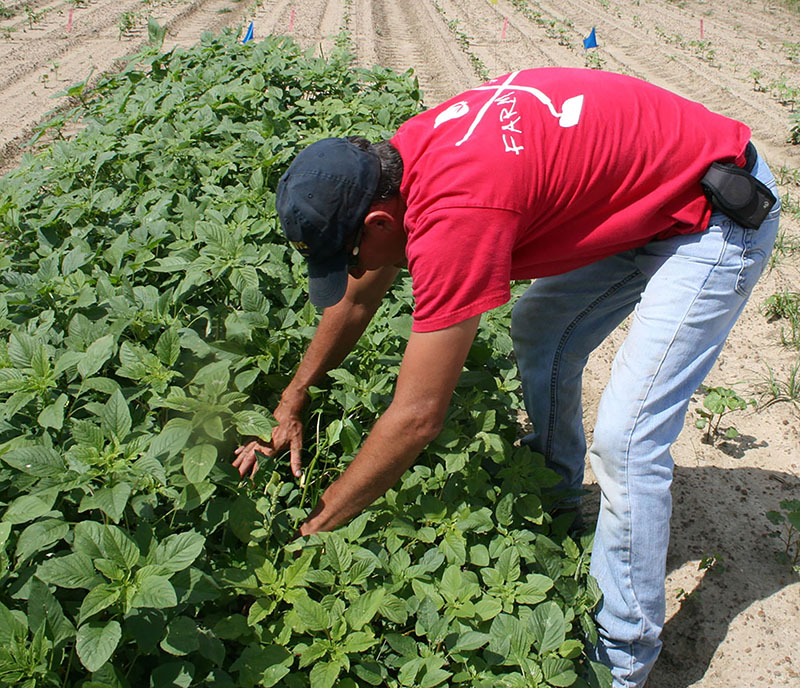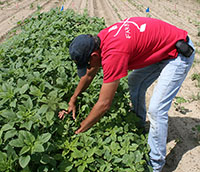Using postemergence herbicides to control problematic weeds has been recently successful for Georgia cotton farmers, according to University of Georgia Cooperative Extension weed specialist Stanley Culpepper.
Two to three weeks of steady rainfall prevented many farmers from making postemergence herbicide applications in late May, a pivotal time for cotton plants to establish growth. These postemergence herbicides help to tame weeds like glyphosate-resistant Palmer amaranth, more commonly called “pigweed.”
Pre-emergence herbicides helped growers make it through the period of constant, often heavy, rains, Culpepper said. Most postemergence herbicide mixtures, like Roundup, dicamba and 2,4-D, have also performed well. He added that even though applications of Liberty herbicide struggled during May’s consistently cloudy conditions, they regained effectiveness when the sun and heat returned in June. But as parts of the state continue to dry, the level of control offered by these systemic herbicides may decrease.
Culpepper’s previous research on the UGA Tifton campus equipped farmers this year with management programs to suppress the development of pigweed. If it’s left uncontrolled, pigweed can grow as high as 10 feet.
Pigweed has the potential to dwarf cotton plants and absorb sunlight, water and nutrients that cotton needs to grow. It also reproduces at high rates. A female plant can produce approximately 400,000 seeds in dryland cotton fields and 750,000 seeds in irrigated fields.
“Successful weed control is greatly influenced by the ability of a grower to be timely in their implementation of each step of a sound system. It is very difficult to be timely when you can’t even walk in the field, much less drive through a field, which was the case in late May and early June,” Culpepper said. “Palmer amaranth is always a great challenge, and when the weed management program can’t be implemented in a timely fashion, the weed is more problematic. However, the new cotton technologies will help growers try to catch up.”
Culpepper advises farmers to visit www.gaweed.com to learn more about cotton weed management programs. Farmers who use these programs should:
- Plant in pigweed-free fields.
- Apply two pre-emergence herbicides with active ingredients effective on Palmer amaranth.
- Apply sequential postemergence applications.
- Conduct a directed layby application.
Growers must also understand the time intervals between two postemergence applications, he said. Intervals vary with specific technologies, so growers must be aware of the herbicides they apply and the directed length of time between applications.
“If you are off a few days between sequential postemergence applications, it could have dramatic consequences,” Culpepper said.
While herbicide applications are important in pigweed management, they can also be devastating to a cotton producer if they’re not correctly applied. According to Culpepper, most postemergence herbicide mixtures can cause twice as much damage when they’re applied in saturated soil. UGA Extension research also shows that it is best to avoid potential herbicide damage to cotton past the eight-leaf stage.
To prevent cotton damage later in the growing season, Culpepper strongly recommends the use of a layby rig for herbicide applications. Equipment used during layby spraying programs applies herbicides to the base of the cotton plant, which improves weed coverage while it reduces herbicide damage.
Additionally, a directed layby application allows growers to use a herbicide chemistries like diuron, Caparol and others, that is absolutely essential to sound, resistant management programs that will influence growers’ abilities to economically survive in the long term.
For more information about issues related to cotton, see www.ugacotton.com.








